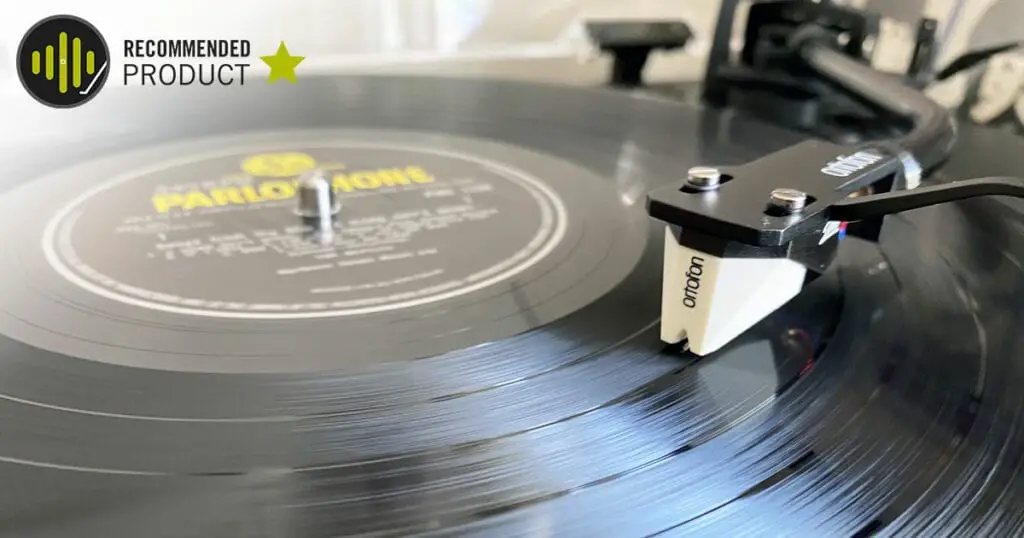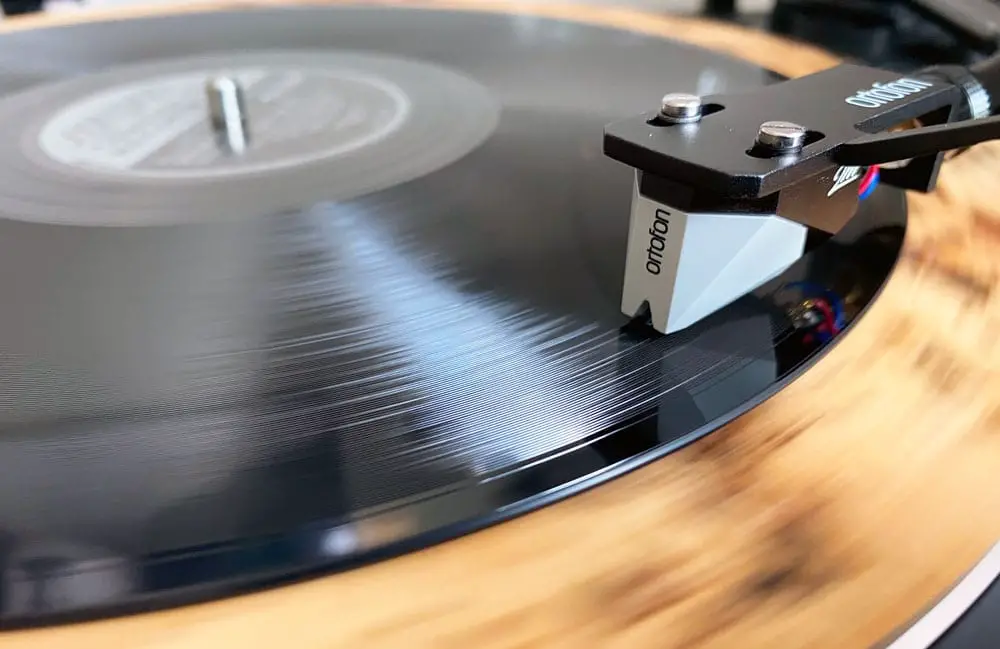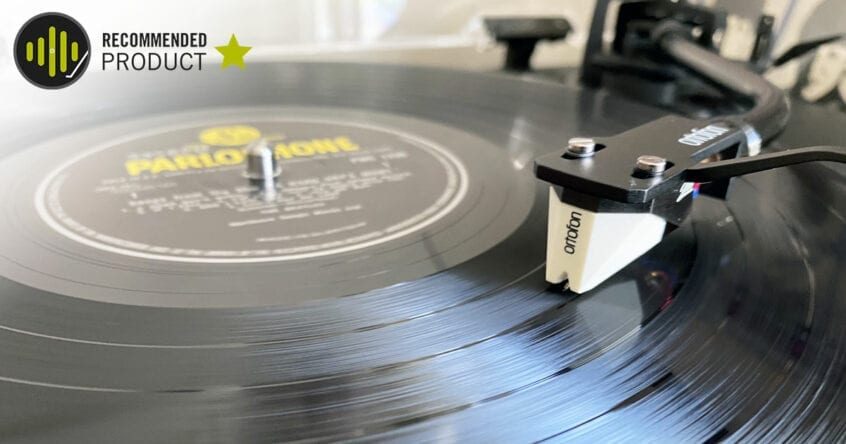For those who prefer to watch rather than read, there is a video overview at the bottom of this post.
I’m a fan of the Ortofon 2M range of cartridges; they provide an affordable entry point to audiophile quality with a clear upgrade path for those seeking a modular approach to signal path improvements.
Arguably, your cartridge is the most important part of your system, as the stylus directly tracks the groove and your cartridge body provides the first point in the signal chain. Everything that follows from this point is at the mercy of how well your stylus and cartridge can track the record and convert it into an electrical current.
Even at the entry-level 2M Red and 2M Blue level of the Ortofon product line, there is a noticeable uplift in sound quality when switching from the diamond tip red stylus to the nude diamond blue stylus. The cartridge body remains the same; all that changes is the stylus construction, which results in a sound with ‘sizzle’ and excitement. Check out our previous shoot-out review to learn more about this.

Do You Really Need a Mono Cartridge?
Stereo won the day for commercial hi-fi, there’s no doubt about that, and it’s rare that labels will release a mono copy of anything released today.
So why would anyone want to buy a mono cartridge?
After all, a modern stereo cartridge can track mono records…
Put simply, a true mono phono cartridge will produce the best sounding playback performance from a treasure-trove of classic mono records from the late 40s to the late 60s. (And even earlier if we get into 78 shellac records – more on this later).
To understand why a true mono cartridge is best, we must first understand the difference between mono and stereo records.
Firstly, mono records contain only lateral cut grooves with no vertical component. There is only one signal, and in simple terms, the groove goes from side-to-side without also going up and down.
Stereo records, on the other hand, contain separate left and right channel information on each groove-wall at a 45-degree angle from each other. The groove is a more complicated shape than mono as it contains both lateral and vertical information.
A mono cartridge should not be used to playback a stereo record unless the manufacturer states that it has both horizontal and vertical compliance; however, a stereo cartridge can easily play a mono record.
A True Mono Cartridge for Better Tracking and Sound Quality
For more information on why a true-mono cartridge is best, check out our full feature. However, in short, a stereo cartridge will never produce 100% the same signal in each speaker; there will always be small discrepancies between the left and right channel resulting in imperfections such as crosstalk, phase, and tracking errors.
Using a mono cartridge can also reduce the response to dust and dirt substantially as any vertical element will not be reproduced. Often, the final result is a much cleaner reproduction of a mono record.
Some audiophiles will recommend using a mono switch when playing mono records with a stereo cart; however, this will not remove the tracking errors and additional surface noise.
2M Mono In review
The 2M Mono is Ortofon’s staple true-mono offering as part of the popular 2M range. The front-facing aesthetic is pretty unique. It is designed by a Danish artist to resemble the facets of a diamond. This subtle design is the perfect nod to the diamond stylus responsible for gracefully tracking every nuanced groove containing beautiful music on vinyl.
The stylus is an R 18µm Nude Spherical diamond, making it optimal for tracking a wide range of mono recordings.
To ensure compatibility with modern stereo systems, the 2M Mono uses a strapped output to deliver the exact same signal from both sets of pole pins. No need for any mono specific equipment here.
Like much of the 2M range, the cartridge body is interchangeable with select styli. In this case, you can also fit the grey 2M 78 stylus for compatibility with 78 RPM shellac records. I was sure to pick up the additional stylus to start my exploration of these historical discs that, for me, are the closest one can get to musical time travel.

Playback Test
I tested the 2M Mono on a number of records, first up was an original pressing of The Beatles ‘A Hard Day’s Night’. I stumbled upon this record at a charity store where it was severely underpriced at £2. Even with the cover in fairly rough shape (but passable), I snapped it up as original pressing Beatles albums typically demand a significant amount of money.
The record played much cleaner than it would on my stereo cart, and the overall focus and instrument separation was plain to hear. The bass had more punch somehow (likely due to the absence of phase cancellation). Like much of the 2M range, the overall sound had that signature ‘energy’ that I’ve come to expect from its stereo cousins, and I’ve always found the sound quality impressive for the price.
Record number two was a new copy (in mono) of Bob Dylan’s classic ‘Highway 61 Revisited’.
Again, the overall sound is more cohesive. There was a sense of depth in the low end that was missing with a stereo cart, and the top end was less washy, and much more focused. There is something quite magical about a mono recording like this, where everything needs its own space across the frequency spectrum to find space in the mix. Because there is nowhere for the mix engineer to go in terms of speaker separation, it forces them to ensure each instrument sits harmoniously next to each other in a complimentary way.
Mono records are also far easier for the stylus to track, as they only have to read lateral information. For a well-recorded mono record, this can actually be a sonic advantage. All too often, we think of mono as inferior, when in fact, a great mono recording, played with the right kit can throw out some serious punch.
Lastly, I tried spinning a copy of Little Richard ‘Tutti Frutti’ (an old 78 copy I picked up for testing the 2M 78 stylus). This is my first introduction to shellac records and I thoroughly enjoyed the whole experience. I now feel like the custodian of a little piece of music history. 78s require a larger stylus profile of course, but thankfully, like all 2M carts, swapping the stylus is easy; simply slide off the previous stylus and push on the replacement.
The Bottom Line
If you own a significant amount of mono records, you’ll not regret investing in a true mono cartridge like the 2M Mono. If you’re new to mono records and just getting started, you’ve got a whole world to explore. Particularly as stereo began its journey to the mainstream through the 1960s, many records were released as both stereo and mono versions.
In some instances, the mono copy featured entirely different mix variants and even alternative endings to classic records. As we’ve transitioned into a digital-first world, it’s often the case that those alternate mono versions are all but forgotten unless you can get your hands on an original mono copy. Again, check out our full article on mono records to learn more about this.
The 2M Mono is your ticket to unleashing the phenomenal potential of mono. Start exploring today.
View Product
2M 78 Stylus




You wrote:
“To ensure compatibility with modern stereo systems, the 2M Mono uses a strapped output to deliver the exact same signal from both sets of pole pins. No need for any mono specific equipment here.”
Well, Ortofon just saved some bucks here by using the same design of the other 2M models (it is the same plastic shell, the same generator design). This might be OK for the 2M Mono which is 200$ but is really annoying for the 2M Mono SE which is much more expensive. I would have expected a true mono design here.
I’m glad you mentioned The Beatles AHDN. The first several The Beatles albums sound superior played in mono.
I’m using a AT-LP5 with the Ortofon mono cartridge mounted.
When listening to the mono version of AHDN you will discover sounds that were covered up or removed when converting the original mono recording to stereo.
The mono version is/was what John, Paul, George and Ringo intended.
The “original mono recording” was never “converted to stereo”. They are two different mixes made from the same multi-track tapes.
I hate listening to mono music, the music loses a lot, and since the music done back in the days of mono doesn’t interest me anyways I’m not missing anything. Besides I think the old jazz stuff done in mono way back sounds better on a Victrola then on a electronic system.
Interesting stuff! I’ve got a 2M Bronze, and while I’m never going to bother swapping the cartridge out to play the few Mono records I do own, I would certainly swap the stylus over! Hmmm now I wonder if that would work?!